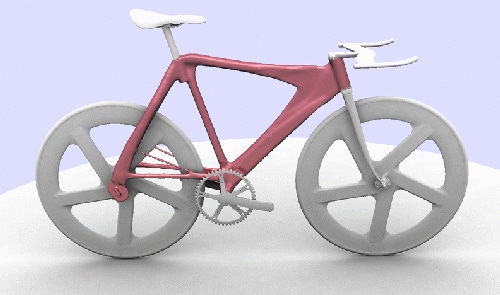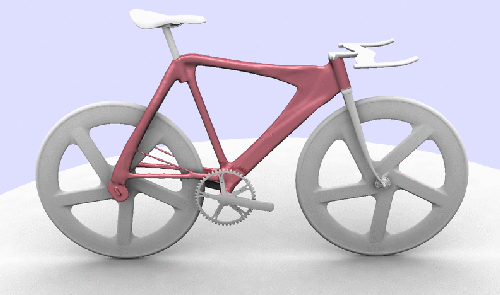Multimaterial 3D Printing Could Spawn a New Era of Design Solutions
July 16, 2015

As additive manufacturing (AM) continues its double-digit growth trend, manufacturers are looking increasingly for advanced capabilities from 3D printing. A number of industry players are focusing on multimaterial printing, such as Stratasys (with its Connex line of 3D printers) and HP (which plans to release its new Multi Jet Fusion technology next year).
Some tech experts, though, point to the lack of software solutions to exploit all the physical possibilities. Jon Harrop, director at technology research firm IDTechEx, has written, "There is a substantial gap between the CAD tools widely used by designers today and the next-generation tools that designers would have to be familiar with before they can hope to fully leverage multimaterial 3D printing."

Today, a typical design workflow involves "a designer laying out geometric elements in order to achieve what they believe is an appropriate shape," Harrop wrote. For example, an AM designer working with multiple materials might use CAD to create multiple "shells," with a separate STL file dedicated to each material.
However, Harrop thinks that reaping the full potential of additive manufacturing will require a "declarative design" approach. In an interview with Design News, he said this term "stems from 'declarative programming' in the software industry, which is a very similar concept: Describe the problem to the computer, rather than describing the solution." The computer generates a range of possible solutions, and the user short-lists solutions or a solution that will work best in the real world. This approach, he believes, will do the best job of exploiting the complex and myriad possibilities of multimaterial 3D printing.
MORE FROM DESIGN NEWS: Is Multimaterial Additive Manufacturing Foreshadowing Another Paradigm Shift?
Autodesk is developing an open 3D-printing platform for software, hardware, materials, and services, called Spark, which "will make it easy for industry and individuals to build multimaterial products," according to James Page, senior product manager for the project. Multimaterial AM, Page told Design News, "allows for a wider range of complex assemblies to be simplified into single components and allows us to design graded, hybrid, and meta-materials that have macro properties that designers have never been able to use before."
There are a number of partners developing multimaterial systems, Page said of Spark. Out of the Spark platform, Autodesk created the Project Wire software for Voxel8's machines for 3D-printed electronics. The software allows the user to import CAD models, select electronic components, and wire them in 3D. The application can automatically lay out optimized circuit wiring and component orientation.
When asked what he thought about Harrop's call for a "declarative design" approach to multimaterial AM, Page directed attention to Autodesk's Project Dreamcatcher, an experimental design platform based on what the company refers to as goal-directed design (GDD) or generative design. "Recent advancements in artificial intelligence and the simulation of complex phenomena have enabled software to play an active, participatory role in the invention of form," Autodesk notes about the platform.
MORE FROM DESIGN NEWS: It's Time to Get Your Feet Wet in Additive Manufacturing - and Production
The Dreamcatcher system allows the designer to describe a design problem in terms of objectives, materials, functional requirements, performance and cost criteria, and manufacturing methods. Using those inputs, "the system then searches a procedurally synthesized design space to evaluate a vast number of generated designs for satisfying the design requirements," according to Autodesk. The user can then evaluate those solutions and even return to the input phase to adjust goals and constraints to generate revised solutions.
Harrop tells us that consulting firm Within Technologies has "pioneered some great approaches to declarative design." Within has released a software solution called Within Enhance, which uses a declarative approach to design lattice-structure parts optimized for lightweighting, robustness, and flexibility. Besides its Enhance product, Within offers a free Within Medical tool used to design orthopedic implants.
Al Bredenberg is a writer, analyst, consultant, and communicator. He writes about technology, design, innovation, management, and sustainable business, and specializes in investigating and explaining complex topics. He holds a master's degree in organization and management from Antioch University New England. He has served as an editor for print and online content and currently serves as senior analyst at the Institute for Innovation in Large Organizations.
About the Author(s)
You May Also Like





